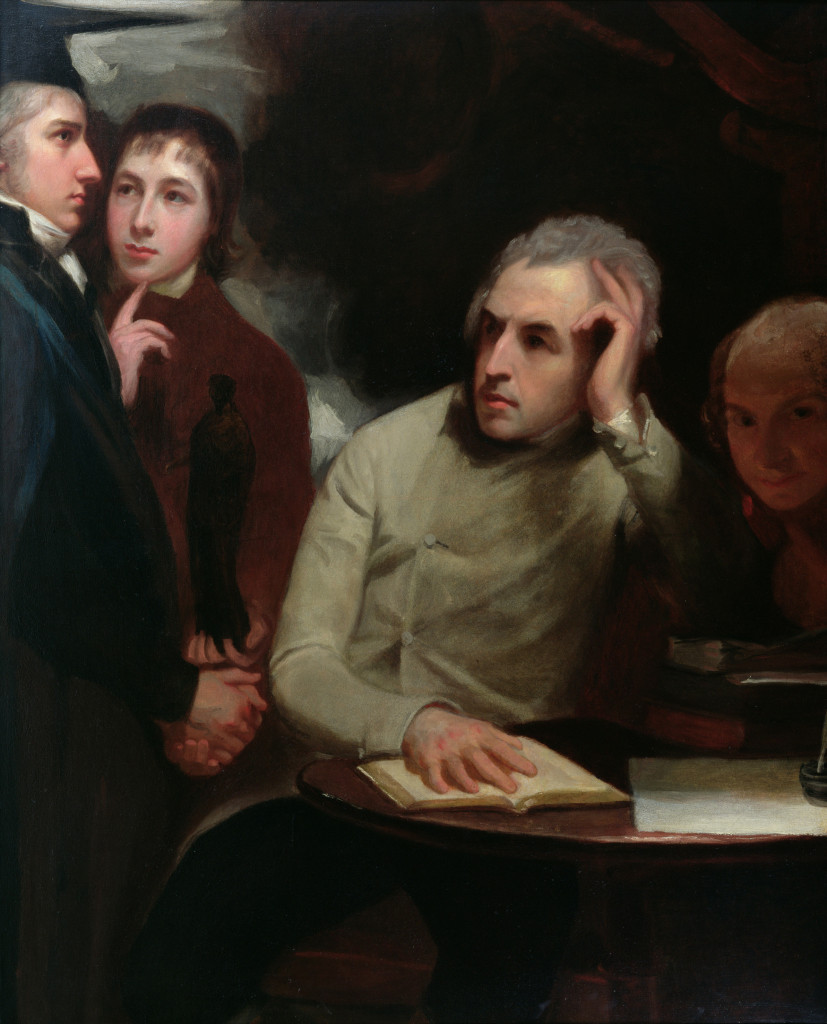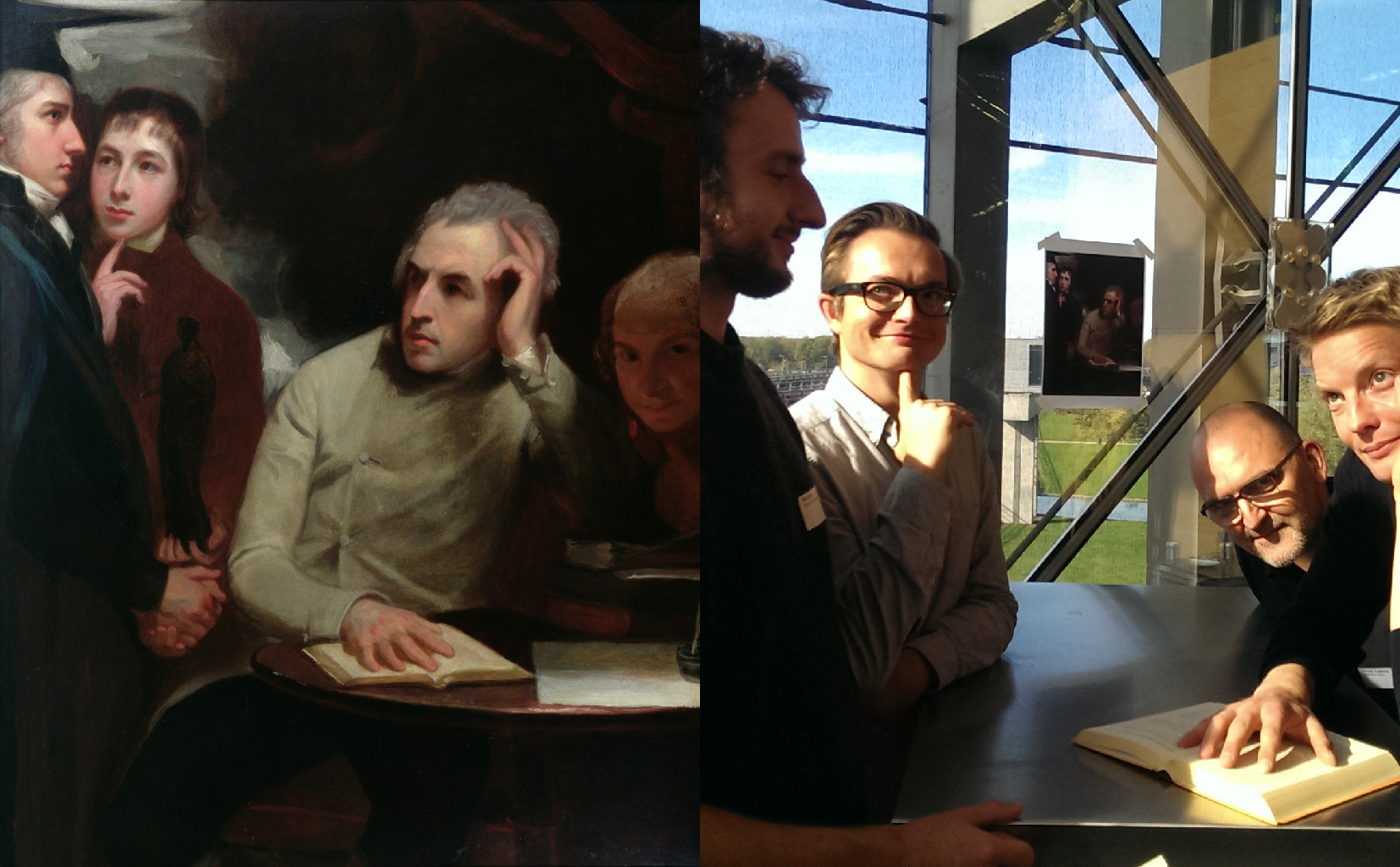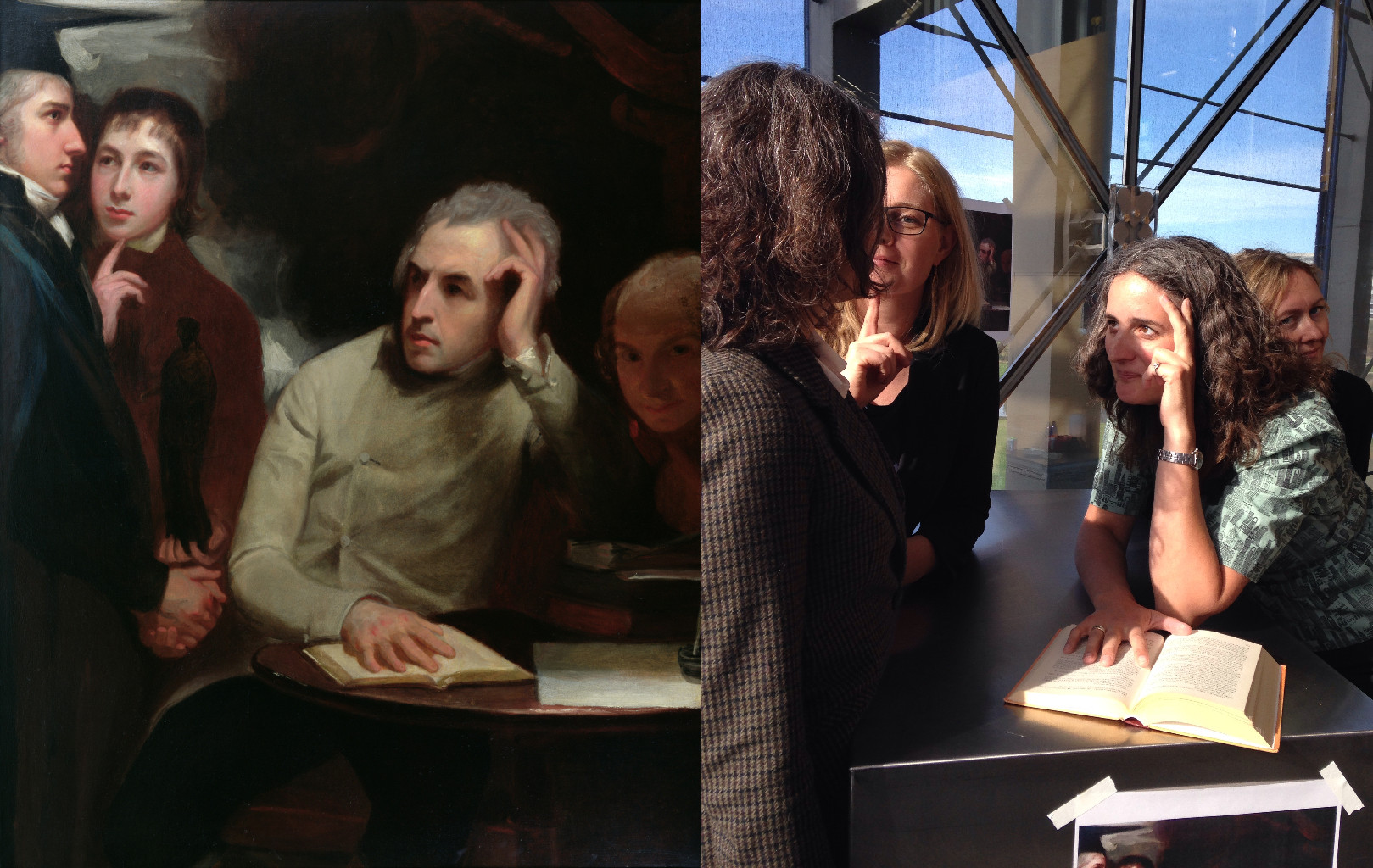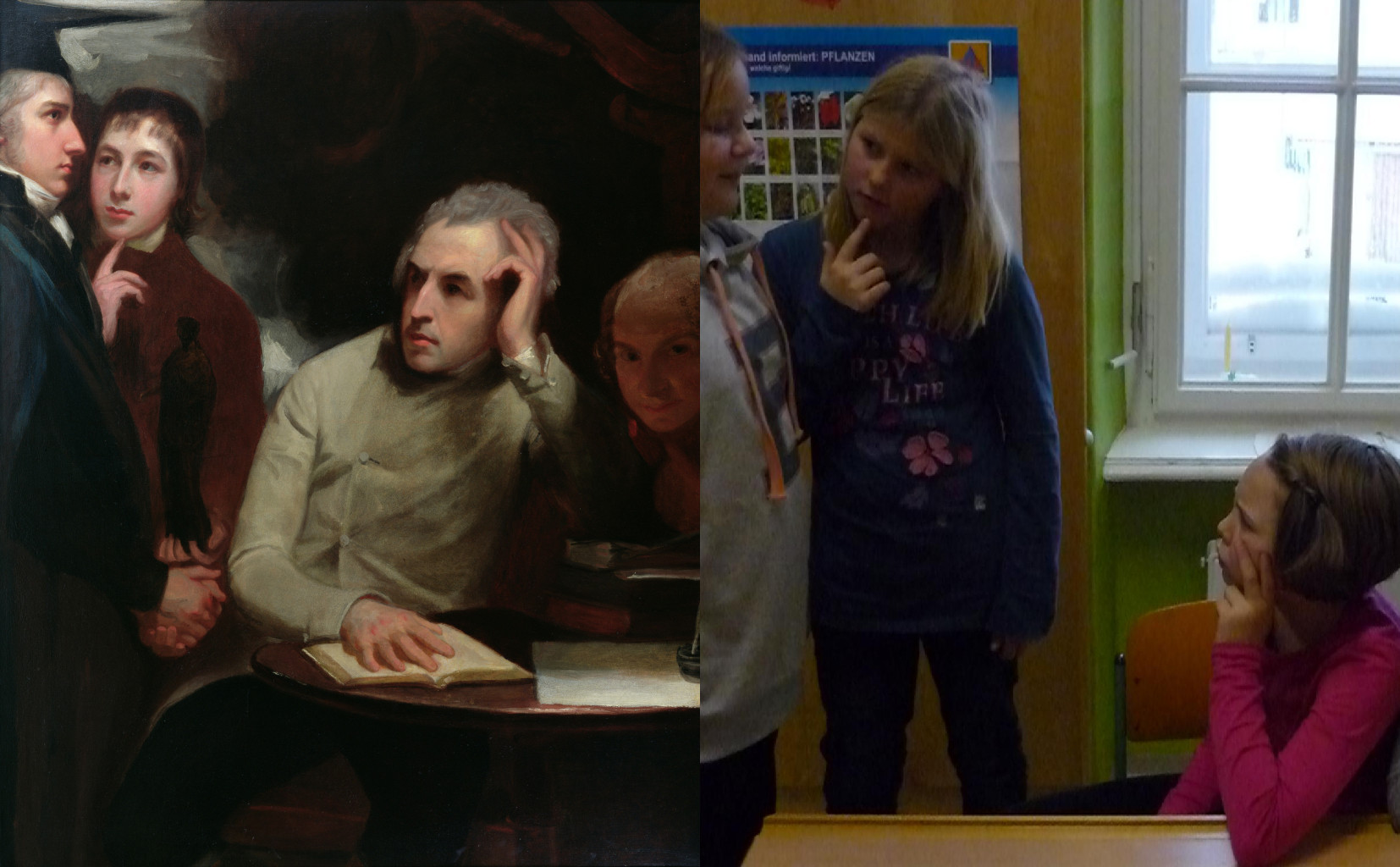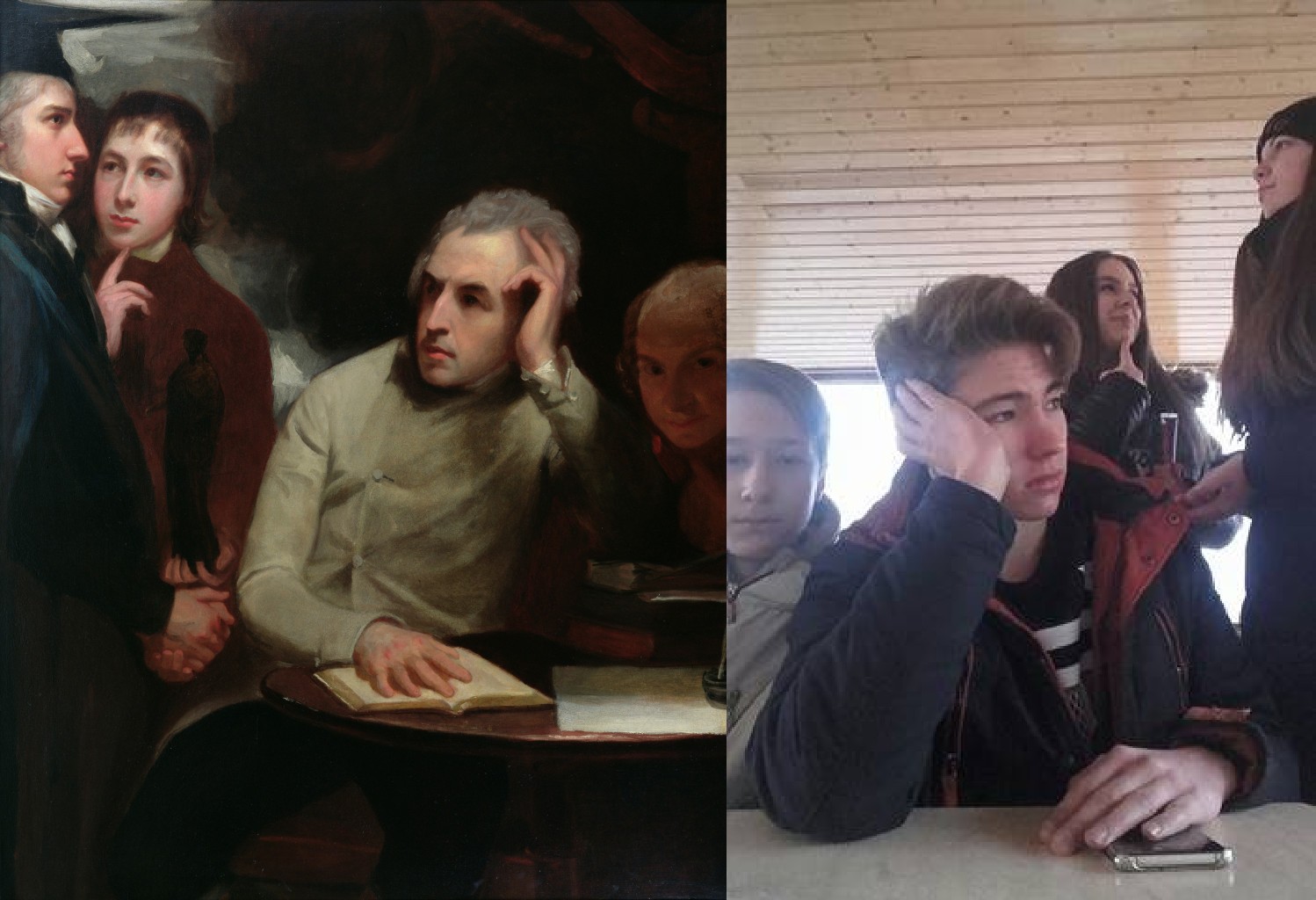By: George Romney (1734-1802)
Created: 1796 , Collection: Abbot Hall Art Gallery, , Kendal, UK Rights: CC-By-SA
Grab three of your best pals and take a moment to appreciate your bond and the meaning of friendship- or just look thoroughly bored with the whole thing and you might achieve the same gaze. The statuette is Minerva, Goddess of the Arts- what can stand in to symbolise culture and high art for you?
Born at Dalton-in-Furness, George Romney began his career in Kendal as the apprentice to local portrait painter, Christopher Steele, but soon rose from his provincial roots to become one of the most fashionable portrait painters of his time. After achieving early success in Kendal, he decided to pursue his career in London and in 1762 he left his family behind to seek his fortune in the capital.
Romney’s painting shows William Hayley, an immensely popular poet in his day, sitting at the table with his hand on Cicero’s ‘Essay on Friendship’. To his left is his son, Thomas (or Tom) holding a statue of Minerva, the Roman goddess of wisdom and the arts – Tom was at the time apprenticed to the celebrated neo-classical sculptor John Flaxman. William Hayley was introduced to Romney by the painter Jeremiah Meyer and his son, William, is shown at the far left of the painting in his Trinity College gown. The last of the four friends is Romney himself, peeking out from the shadows at the far right of the picture.
